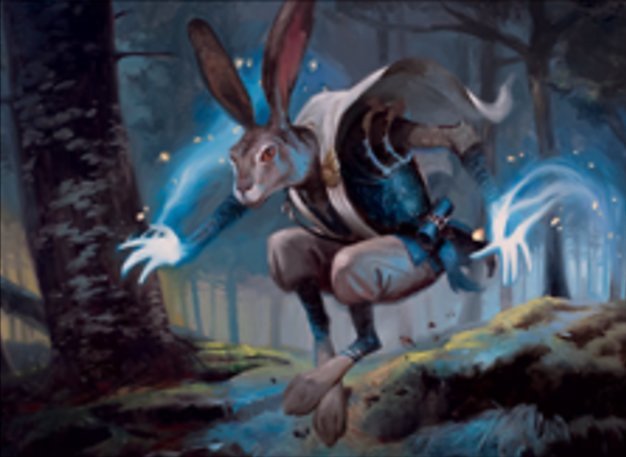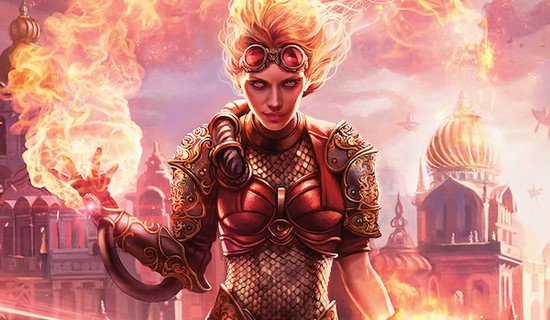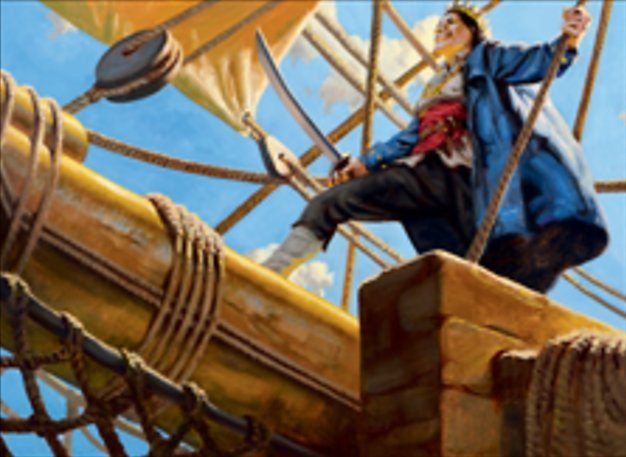When playing in one-on-one games, there are some strategies that are not viable. In a normal game of most Magic formats, when we aim to reduce the opponent's life, or deck, to zero, we can take several approaches. Whether they are fast and as obtuse as a club on the forehead, or slow and agonizing, like watching a free-to-air channel program on a Sunday afternoon. Even though “Never” is a very strong word, a strategy that cannot be developed in a one-on-one game is the use of politics.
Negotiating and talking is a great weapon to be used in your favor when in larger groups of players, but threats and persuasion become inefficient in the face of a “combat phase, tap everything and hit ten” of your opponent with a horde of goblins extremely motivated in the battlefield. And even if you have the means to clear your opponent's table with a card, using it at once is far more efficient than showing it and trying to convince your rival to obey you to “benefit the state of the game at the table” . Don't even think about sending him to attack another player, because, in addition to not making any sense, chances are great that you will be referred to the nearest psychiatrist to treat your schizophrenia.
Ad
Now, when in a traditional multiplayer commander battle royale at a saturday afternoon with your favorite group of fellows, it's another business. Negotiation and politics will be constant throughout your game and have intricacies that go beyond what is believed. There are several ways to modify this variant of the game, from discarding it completely and starting to play in the least interactive way possible, to transforming the whole game into a bizarre sub-commerce, where one of the players dictates interactions at the table and allows what will happen or not, just like a game of Monopoly ruled by the IRS.
Being personally one of the players who adopt the kind of strategy that turns a Magic game into an episode of The Maury Povich Show, I must say that it is better when your true intentions are not realized by the others. Within the intricacies of the commander's politics, there are some approaches that you can follow, the most passive-aggressive of all, the Group Hug.
Group Hug is nothing more than being a nice guy and helping the whole table. The cards used in your deck will be aim to offer the maximum possible full benefits to everyone who is playing. At first your deck will look silly and harmless. After all, all of your cards trigger effects that gives everyone at the table generous amounts of life, card draws, tokens and any other types of facilities in the lives of other players.
An example of a Group Hug deck:
This is a slow playing style. You want to prolong the match as long as possible, benefiting everyone involved. Your focus is not making one million 1000/1000 tokens and attacking all in one player, while dealing a thousand commander damage to another. The focus of a Hug Group player is an inherent loan sharking of his actions. All cards played must appear innocent at first, such as the Vow of Wildness, an Aura enchantment that gives + 3 / + 3 and trample to the enchanted creature. At first, it looks like a great enchantment to be used on your creatures, in order to make them capable of dealing extra damage or evading bodies that are already big. But the creature enchanted by this aura gains the negative ability that it cannot attack you or planeswalkers you control. Thus, making the possibility of enchanting a creature already big enough of your opponent an even better option, since not only brings the sensation of “Gee, he gave my creature trample and increased its stats. What a nice guy!”, but it also gives you protection. Since, if you are alone at the table, this gigantic and destructive creature of him will be of no use against you.
Another exquisite example of Group Hug's strategy is Tidal Barracuda, a card that allows all players' cards to be played as if they have flash. Except on your turn, where no opponent can play any cards.

The group hug strategy, in fact, is not all about favoring the opponent. It's about being one step ahead of the opponent in terms of favoring. Although Tidal Barracuda forbids the opponent to play on his turn, he will never destroy you because, in addition to helping (a lot), maximizing the slow speed spells he has, it also makes you look like a nice guy who is helping him, and therefore, he will not want to harm you and lose the help you could provide in the future.
Ad
In return, you will also be strengthening yourself with cards like Kasmina, Enigmatic Mentor or Ghostly Prison. This type of piece on your side will make your opponent think twice before attacking you or taking certain actions against you, since it will cost resources on his part, which can be better used against other opponents, who not only are unprotected, as they are not as benevolent and cool guys as you are. Thus, all your cards will need to have a double value, so that they favor the opponent in the first place, but they favor you secondarily and with greater intensity. Thus, it can be said that your deck must be assembled in order to kill "two rabbits with one stone".
Speaking of stone rabbits, Magic has a variety of creature types in its fauna. Rats, insects, cats and dogs, all of them are interesting and affordable tribals when building tribal decks. Even squirrels are favorites of the players and can form a fun legacy deck for playing an FNM. But Magic unfortunately gives very little support for rabbits and until last week we had only four eared buddies in 27 years of game.
For all the lovers of this vegetable eater, we had the luck of being blessed with Kwain, Itinerant Meddler. Besides Kwain being a name not so cute for a rabbit, the card is a addition more than welcome for the Group hug decks. Unfotunately, this hairy creature comming directly from Alice in the Wornderland, is not good to be the main commander of your deck. It's ability don't sustain a whole deck on it's shoulders, since is much more generic than other commanders of the Group hug style, and your colors (blue and white) are very limited, since this type of strategy beneficits itself more easily from decks of three or more colors, and put's great weight on the green color. Kwain is a wizard too, besides being a rabbit, but that's not what matters about him. But if you have a wizard tribal and wants to try it, go ahead!

Even though Kwain does not serve as the central gear of his Swiss watch made of 100 pieces of colored cardboard, it definitely serves as one of the best gears. In fact, as of today, I don't build any Group Hug deck without him as one of the ninety-nine cards in the deck.
Its ability is very simple, when tapped, it allows all players, including opponents, to make the choice of whether or not to draw a card from their decks, and those who have opted in to draw still gain a life point. This ability is the pure liquid of the Group Hug extracted straight from the source, favoring opponents with an pluss that they will take full advantage of, not only contributing to their image through the other players at the table, but also creating the aforementioned situation in that everyone benefits, especially you, since Kwain is a reliable draw engine and can be accumulated with enchantments like Teferi's Tutelage, which will help you get more pieces to build your field in a way that will give consistency to you. Or Freed from the Real, a card that lets you turn and untap the enchanted creature, allowing you to take advantage of Kwain's draws more than once. And adding it all up with Narset, Parter of Veils or a Hullbreacher, you can turn your opponents' draw into an advantage just for you by turning this rabbit into a real monster. Of course, if you do that, it won't look so nice to the table. But hey, it's only ideas. And if you're uncomfortable with your opponent earning a fearful hit point, nothing that a Psychosis Crawler won't solve.
Ad

Using ways to optimize the draw provided by your rabbit friend, you will always be at an advantage, since your deck was built with the aim of accumulating cards on the table, strengthening in a connected way, while many decks of the format are assembled in a way prioritizing certain moves, leaving opponents with more options than they can handle, and of course, you'll already have answers for them in mind.
Kwain, Itinerant Meddler is definitely a fun card, and my favorite card from my collection. It strengthens a style of play that is not well known, or explored, as well as has everything to fit into other more passive archetypes, such as political control and Pillow Fort. All of these strategies are extremely valid, fun and I loved talking about them here.
There is a discussion in the middle of the commander about how much Group Hug is a valid winning strategy, since for many, they cannot separate the idea of benefiting all players at the same time and planting strategic cards that benefit you most efficiently, while your presence brings extremely crucial comfort to the table, so that you look irreplaceable.
Thus, many, erroneously seeing cards destined for victory on Group Hug decks, end up confusing it with political control decks, which is nothing more than pure confusion, since this type of deck is extremely focused on exchanging favors through cards that benefit one player at a time, in order to create strong alliances and that will do as you say, purely on the basis of persuasion. Bringing it to a more real picture, it is analogous to paying one or more bodyguards for their services until you no longer need it.
Many fail to make the separation of using cards that benefit the greatest good of all players from the passivity of this act. Thus, it seems that this type of deck is something designed to help everyone at the table and make the most of their decks, so that the player using it is totally defenseless if opponents threaten it. The big mistake comes from the fact that although you are helping everyone, you can insert cards in the deck that will give you a victory.
Group hugging is an art a little more covert than ordinary political control. It's like putting laxative on a cake at the family reunion and watching your relatives fight over the bathroom key. And just as you did at that meeting, you will laugh at your uncle's face as you slowly lock yourself in the bathroom and hear him screaming. So it is with this type of strategy. You will clog everyone with cool news, useful cards and all kinds of perks while evading any attention and setting up your defenses, so that in the end only you and one person who fought the whole game for supremacy are left. Only then will he realize that his creatures will not be able to attack you unless he pays enough mana, or that you have resistance to magic, or that you have all the pieces of a combo on the battlefield. Does not matter. The important thing is how your game will be developed a thousand times more, and the opponent is totally dependent on you. And that's when the bear hug breaks him.
Ad
Not only is Kwain, Itinerant Meddler a perfect addition in itself for any deck enthusiast of this type of sadism art, but it also opens up interesting perspectives of what Wizards development team have for this archetype that is, without a doubt, , one of my favorites.
I just hope that some good Mono Red rabbit comes out for me to use on my big decks.









— Kommentare0
Sei der erste der kommentiert